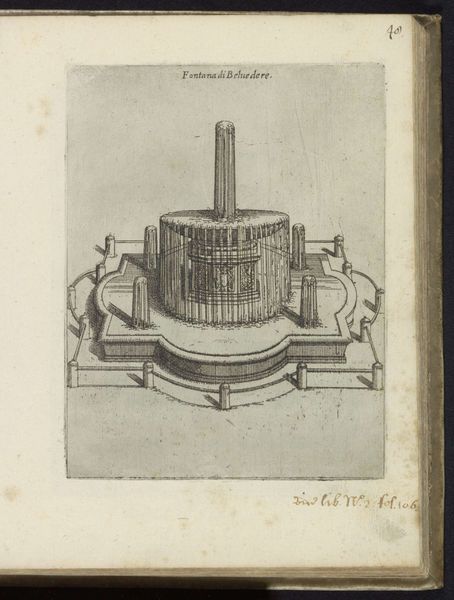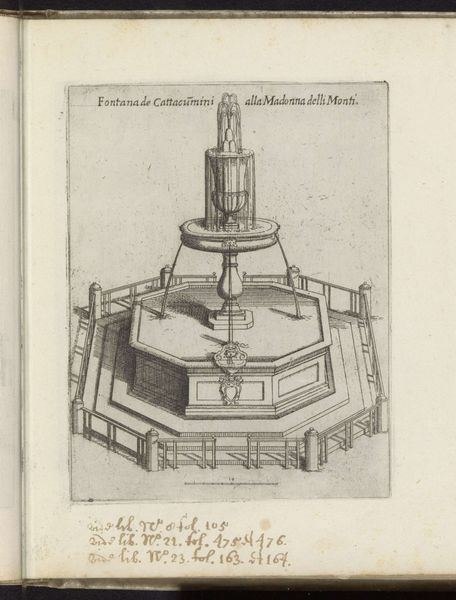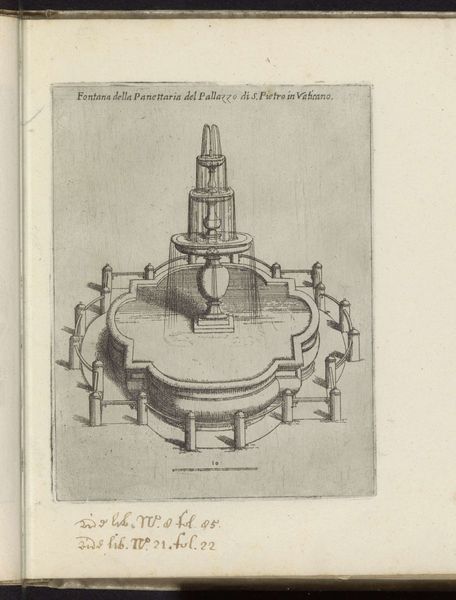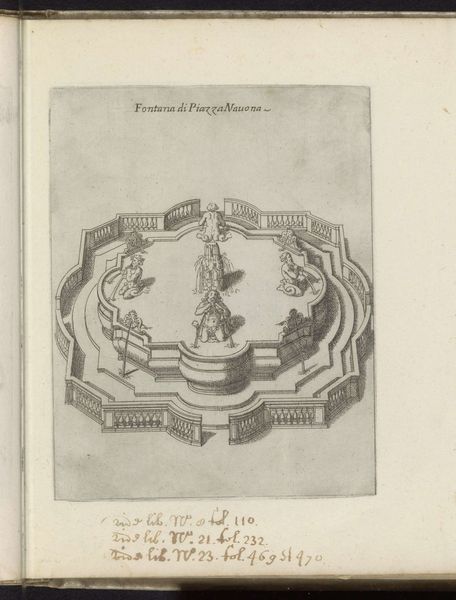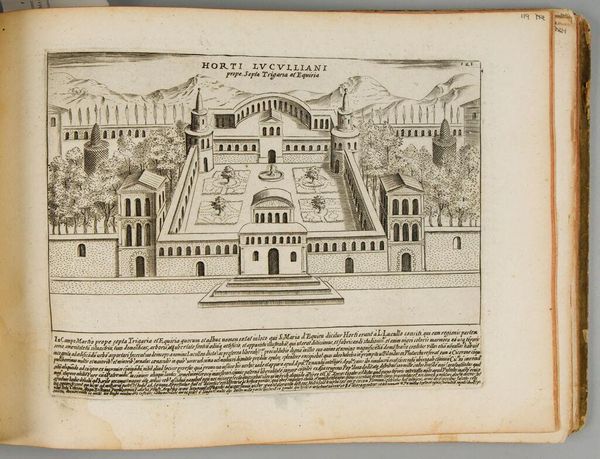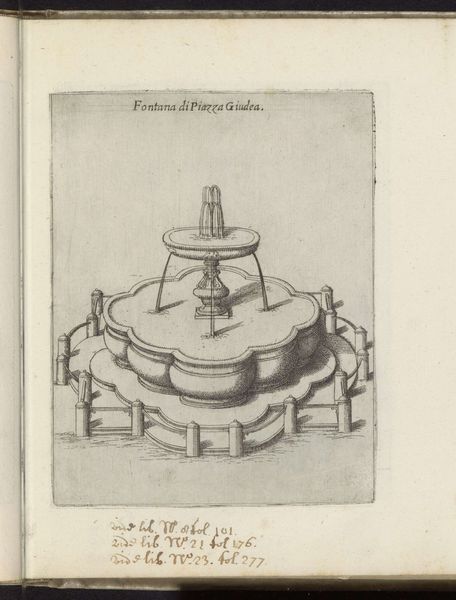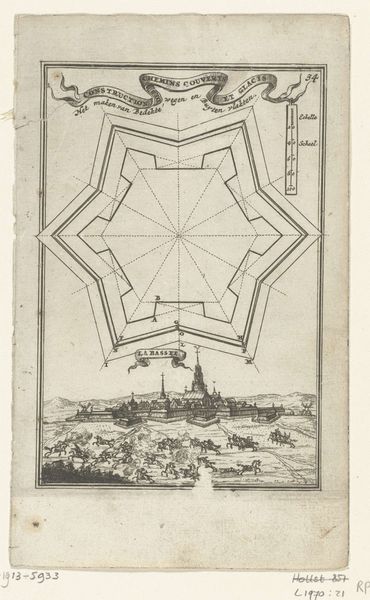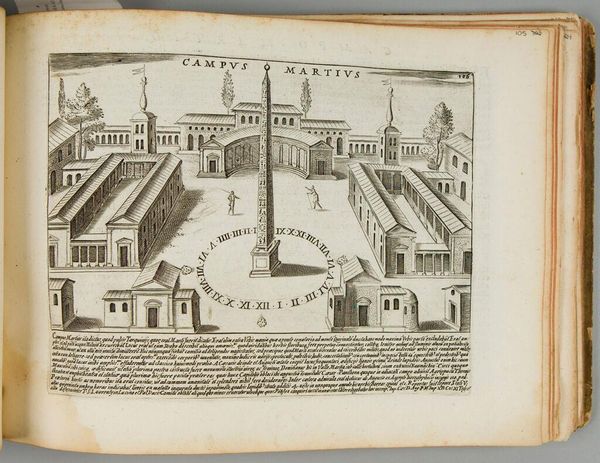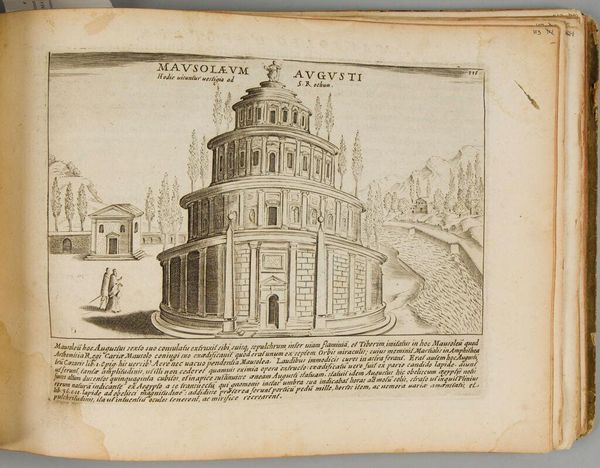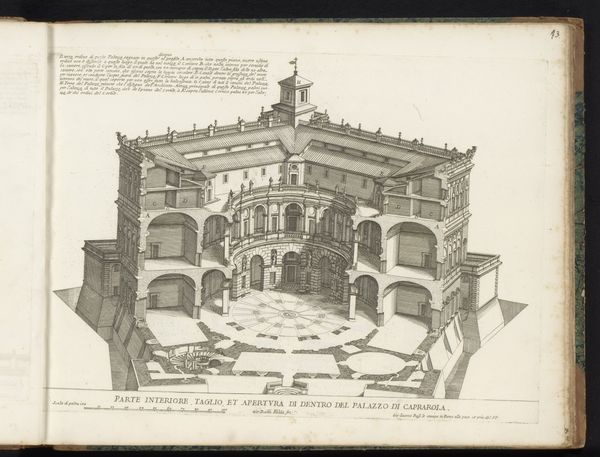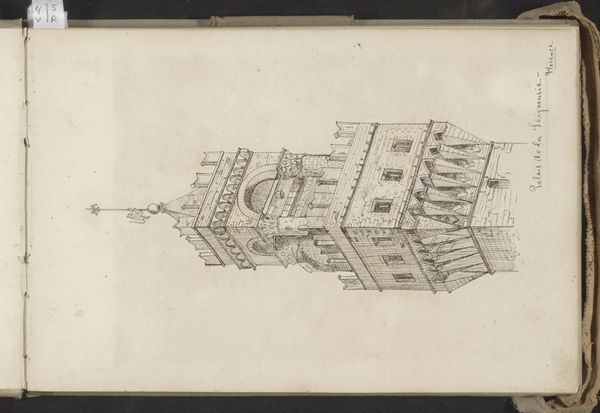
drawing, paper, ink, engraving, architecture
#
drawing
#
aged paper
#
toned paper
#
baroque
#
old engraving style
#
sketch book
#
paper
#
personal sketchbook
#
ink
#
pen-ink sketch
#
pen and pencil
#
pen work
#
sketchbook drawing
#
cityscape
#
italian-renaissance
#
sketchbook art
#
engraving
#
architecture
Dimensions: height 188 mm, width 146 mm
Copyright: Rijks Museum: Open Domain
Editor: Here we have Domenico Parasacchi's "Fountain in Piazza Farnese in Rome," created around 1637. It's an ink drawing on paper. What strikes me is the rigidity in the architectural detail, yet there’s an inherent fluidity implied by the fountain itself. How do you interpret this work? Curator: Well, considering its creation during the Baroque period, it is important to reflect on the social and political power such a structure represents. Fountains, particularly in public squares like Piazza Farnese, were about more than just aesthetics or even just access to water. Think about who commissioned this, the Farnese family. What does it say about their position? Editor: That makes sense. So, the fountain wasn't just functional; it was a symbol of power and prestige for a specific family during a specific time. But how does Parasacchi’s representation play into this? Curator: Parasacchi, through his drawing, documents and, to an extent, legitimizes that power. Consider the cityscape: who gets to enjoy the spectacle of water? Who controls the resources to even *build* such a thing? The rigidity you noticed can be seen as a reflection of social hierarchies literally set in stone – or, in this case, meticulously rendered in ink. How might a contemporary artist address similar themes of power and access using water as a symbol today? Editor: Hmm, maybe through highlighting water scarcity issues or protesting water privatization. I hadn't considered the drawing as a document of social power before, but it makes complete sense. Curator: Exactly. It reminds us that art is rarely created in a vacuum, and even seemingly simple depictions of fountains can hold layers of meaning about the societies that produce them. Editor: Thanks! Looking at it this way has totally changed how I see this piece, and others like it.
Comments
No comments
Be the first to comment and join the conversation on the ultimate creative platform.

